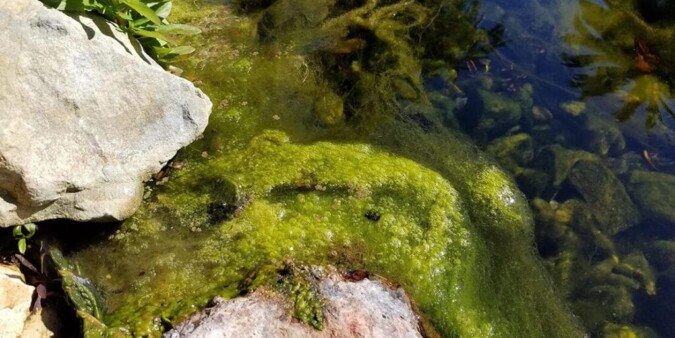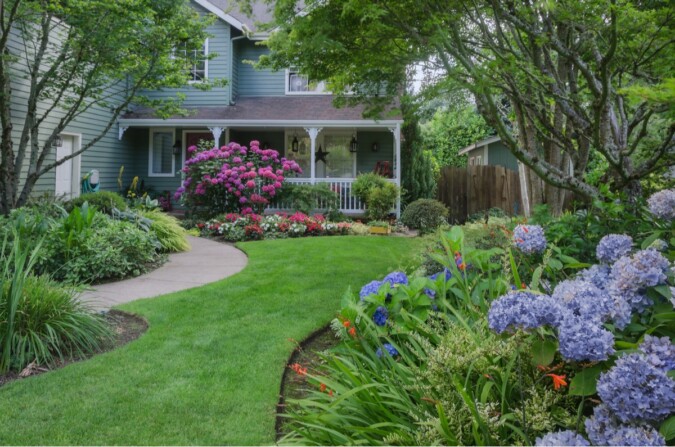No one wants their backyard oasis to look like it belongs in a swamp horror movie. Green, murky water can turn a beautiful pond into an eyesore.
Fixing the problem is easier than most people think, but preventing it in the first place is even better. The key is balance—keeping algae under control without harming the ecosystem.
A well-maintained body of water should be clear, vibrant, and thriving with life.
The moment it starts turning cloudy or taking on that dreaded green shade, it’s time to act fast. Luckily, there are plenty of practical solutions that don’t require dumping harsh chemicals.
Key Points:
- Sunlight fuels algae growth.
- Excess nutrients make the problem worse.
- Filtration and aeration help maintain clarity.
- Natural solutions work best long-term.
- A mix of plants, fish, and bacteria keeps the ecosystem stable.
1. Call a Professional Before Things Get Worse
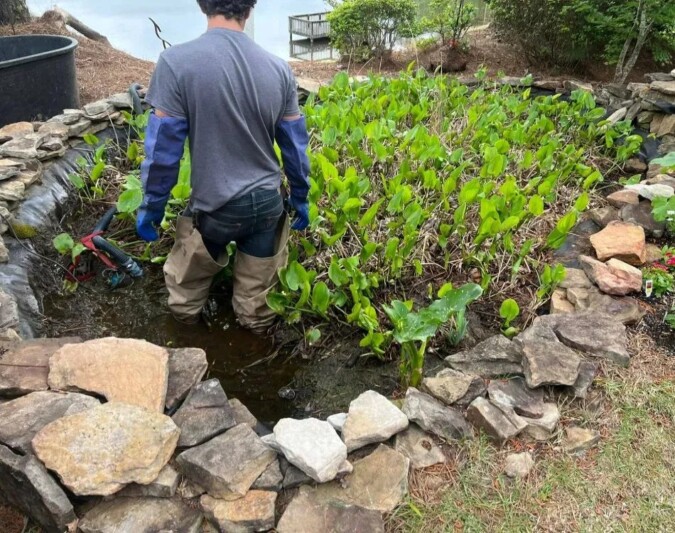
If the issue seems out of control, a pond specialist can offer a professional assessment.
That Pond Guy, provides expert solutions for everything, including koi pond construction and lake maintenance.
With over 400 five-star reviews, his team knows how to restore even the murkiest bodies of water to crystal-clear perfection.
A professional can quickly diagnose whether the issue comes from poor filtration, excess nutrients, or an unbalanced ecosystem.
If DIY solutions have failed, calling an expert can save both time and frustration.
2. Reduce Direct Sunlight Exposure
Algae thrive in sunlight. If the pond sits in an open area, too much light encourages rapid growth. Blocking excess sun prevents algae from spreading like wildfire.
A few ways to reduce exposure:
- Install floating plants like lilies.
- Use artificial shade structures or strategically placed trees.
- Add aquatic plants that block light from reaching deeper levels.
Less sunlight means fewer algae problems. Even partial shade can make a huge difference in long-term water clarity.
3. Limit Nutrients That Feed the Problem
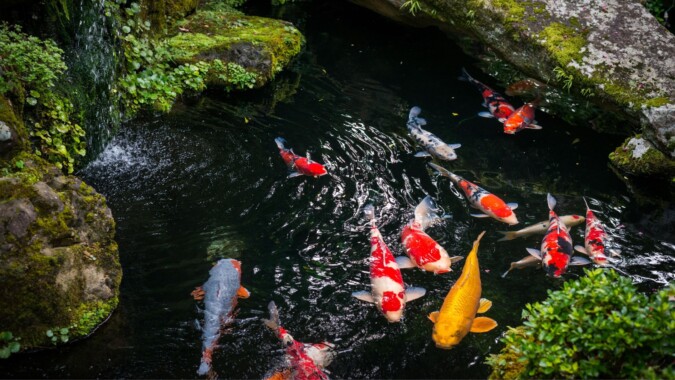
Nutrients fuel the growth of unwanted algae. Runoff from gardens, excess fish food, and decomposing leaves all contribute. To keep the balance right:
- Avoid overfeeding fish.
- Skim leaves and debris regularly.
- Use natural pond-safe fertilizers instead of chemical ones.
Too many nutrients create a buffet for algae, allowing them to multiply at an uncontrollable rate. Regularly removing organic matter helps prevent this.
4. Invest in Proper Filtration
A good filter removes particles before they cause issues. The right system depends on the size and type of water feature. Two common options:
- Mechanical filters: Trap debris before it breaks down.
- Biological filters: Support beneficial bacteria that process waste.
A clogged or ineffective filter can worsen the problem rather than fix it. Regular maintenance ensures the system runs smoothly and does its job properly.
5. The Power of Aeration: Why Circulation Matters
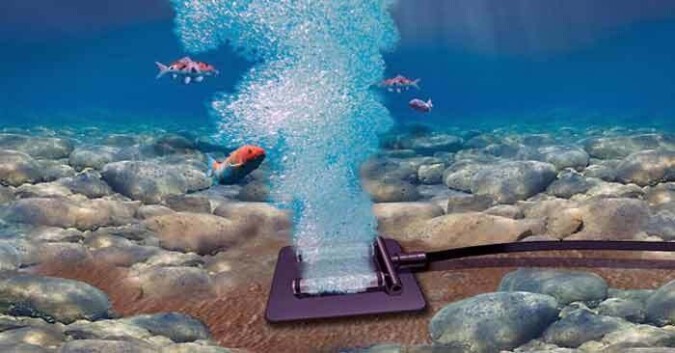
Still water breeds algae. Moving water prevents stagnation and boosts oxygen levels. Lack of circulation allows debris to settle at the bottom, creating a breeding ground for unwanted growth.
Some ways to improve circulation:
- Install a fountain or waterfall.
- Use an air pump or bubbler.
- Introduce oxygenating plants like anacharis.
FUN FACT: A well-aerated pond supports fish health, keeping them active and reducing stress levels. Happy fish, clear water!
6. Introduce Beneficial Bacteria
Not all bacteria are bad. Certain strains break down organic waste before it fuels algae growth. Consider adding beneficial bacteria regularly, especially after cleaning or adding new fish.
Bacteria naturally regulate the ecosystem by converting harmful compounds into harmless elements. They act as nature’s cleanup crew, preventing excess buildup that turns water cloudy.
7. Stock With the Right Fish
Some fish eat algae naturally. A few great choices:
- Koi and goldfish: Nibble on string algae.
- Plecos:Thrive in larger bodies of water.
- Grass carp: Excellent for bigger setups.
Not all fish contribute positively. Overcrowding leads to excess waste, which can backfire and create more problems than solutions.
8. Use Natural Barley Straw
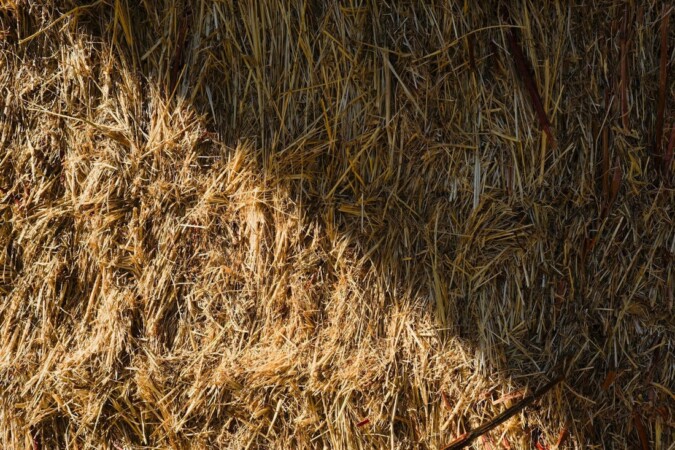
Barley straw releases compounds that prevent excessive algae growth. It won’t clear existing blooms overnight, but it helps in the long run.
- Place a small bundle in a mesh bag and let it float near moving water for the best effect.
- Replace every few months for continuous effectiveness.
- Works best when combined with proper filtration and aeration.
9. Regular Cleaning and Maintenance
Skipping routine care leads to big problems. A simple maintenance schedule includes:
- Removing debris weekly.
- Checking and cleaning filters monthly.
- Inspecting for leaks or signs of imbalance.
Neglecting maintenance invites algae to take over. A few minutes of effort each week saves countless hours of work later.
10. UV Clarifiers: A High-Tech Solution
If natural solutions aren’t enough, a UV clarifier helps. These devices use ultraviolet light to break down algae cells, preventing them from multiplying. Many pond owners see results in just a few days.
Pro Tip: UV clarifiers work best in combination with other methods like aeration and filtration for long-term success.
11. Seasonal Adjustments: How Weather Impacts Water Clarity
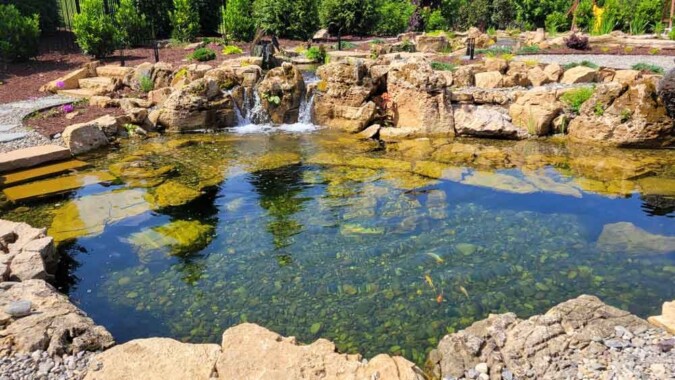
Pond conditions shift throughout the year. In summer, algae grow faster due to higher temperatures and sunlight. In winter, beneficial bacteria slow down.
Adjust care accordingly:
- Spring & Summer: Increase aeration and plant coverage.
- Fall: Remove dead leaves before they sink.
- Winter: Reduce fish feeding and avoid disturbing ice-covered areas.
Different seasons require different strategies, and staying ahead of changes prevents major algae outbreaks.
12. The Role of Floating Plants
Floating plants offer a natural and effective way to shade the water surface and absorb excess nutrients before algae can use them.
- Water lilies and lotus flowers provide coverage and look stunning.
- Duckweed and frogbit multiply quickly, offering rapid results.
- Water hyacinths work well but require control to prevent overgrowth.
The right plant selection enhances both aesthetics and ecosystem health.
13. Why Testing Water Quality Matters
Testing reveals hidden problems before they get out of hand. Key parameters to monitor:
- pH Levels: Should be between 6.5 and 8.5.
- Ammonia and Nitrites: Must stay near zero.
- Nitrate Levels: Should remain low to prevent algae blooms.
Regular testing ensures early detection and quicker corrections, keeping the ecosystem in balance.
Conclusion
No one likes a murky pond. A few simple adjustments keep things clean and balanced. Reduce excess nutrients, improve filtration, and introduce natural solutions for lasting results. If problems persist, a pond specialist can help restore clarity without harming fish or plants. Healthy water leads to a beautiful outdoor space—without the swamp monster vibes!

